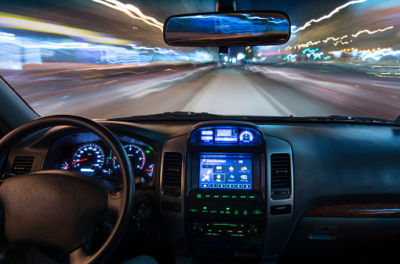


In some parts of Michigan, drivers can already occasionally find themselves traveling next to self-driving vehicles. It won't be long before technology and automotive companies are testing autonomous cars on the road. To make sure this happens safely, the National Highway Traffic Safety Association (NHTSA) has announced revised safety guidelines for self-driving vehicles. But whether those voluntary regulations are enough to keep drivers safe remains to be seen.
Michigan has become one of the main testing grounds for autonomous vehicles in the country. The University of Michigan's M-City provides automotive manufacturers a safe place to test and perfect the algorithms that make self-driving cars possible. The state was also one of the first to pass laws allowing autonomous vehicles to operate on public highways, provided that they had passed federal safety standards. But what those standards might be has remained elusive.
Partially automated vehicles are actually common in today's market. Most modern cars and trucks are equipped with at least one automated system, including cruise control or lane-assist. Higher end models may even be equipped with the ability to park themselves. To address these various degrees of autonomy, the NHTSA has outlined 6 levels based on "who does what, when":
Levels 0-2 are seen as primarily human-driven. Levels 3-5 are "highly automated vehicles" (HAV). To date, Levels 4-5 are still theoretical or in development.
In 2016, the Department of Transportation's National Highway Traffic Safety Administration (NHTSA) took its first stab at regulating the self-driving vehicle industry through its Federal Automated Vehicles Policy. The policy provided voluntary guidelines for manufacturers developing self-driving vehicles that had to do with everything from crash safety to cybersecurity. The policy was effective immediately, but NHTSA also opened the issue for comments from the industry, consumer safety organizations, and the general public.
On September 12, 2017, those comments coalesced into the NHTSA's new "Automated Driving Systems: A Vision for Safety". Once again, this document provides voluntary guidance on automated driving systems. The Department of Transportation states:
The purpose of this new voluntary guidance is to support industry innovators, States and other key stakeholders as they consider and design best practices relative to the testing and deployment of automated vehicle technologies, while informing and educating the public and improving roadway safety.
The new voluntary guidance focuses on Levels 3-5 of automated vehicles. It also removes significant regulation present in the 2016 version, for the purpose of supporting technological advancements. In addition, the new guidelines provide policy considerations and recommended language for states looking to follow Michigan's lead in authorizing and regulating the operation of self-driving vehicles on public highways. It clarifies the roles of state and federal governments moving forward.
Industry officials are happy with the changes they see. The Alliance of Automobile Manufacturers told the New York Times, “The guidance provides the right balance, allowing emerging innovations to thrive while government still keeps a watchful eye over new developments.” But some consumer groups question whether voluntary guidance will be enough to keep auto makers from putting unsafe self-driving cars on the road. Jason K. Levine, of the Center for Auto Safety in Washington said:
The voluntary policy announced today is a retreat from the already flawed guidance provided in 2016. [The lack of mandatory safety assessments puts automakers in control] who have frequently proven they cannot be trusted to protect the public interest in their race for profits.
The NHTSA admits that this remains an ongoing process. As self-driving vehicles develop further, so too will the regulation of that development. In the meantime, those early adopters who get behind the wheel of Level 3-5 vehicles will just have to hope that they are putting their trust in the right programming, or that they can react fast enough to prevent a product defect from turning fatal.
At Sachs Waldman, our experienced personal injury attorneys stay on the cutting edge of auto accident law. If you or someone you know has been injured by a negligent driver or a defective vehicle, we can help you get your damages covered. Contact our Detroit personal injury law office at 1-800-638-6722.
© 2024 Michigan Injury Attorneys
View Our Disclaimer | Privacy Policy
Detroit Personal Injury & Car Accident Attorneys